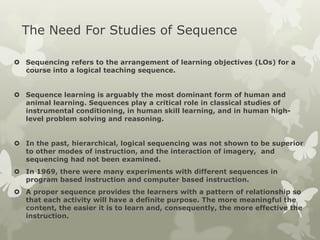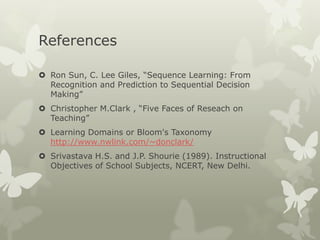The document discusses the importance of sequencing learning objectives and curriculum. It notes that sequencing objectives in a logical order and considering relationships between objectives can help learning. Different sequencing methods are described such as from simple to complex, critical sequence, and relationships between objectives. The document also discusses Bloom's taxonomy of learning domains and the need for process-product research to relate instructional variables to student achievement. Problems with past process-product research are outlined.















